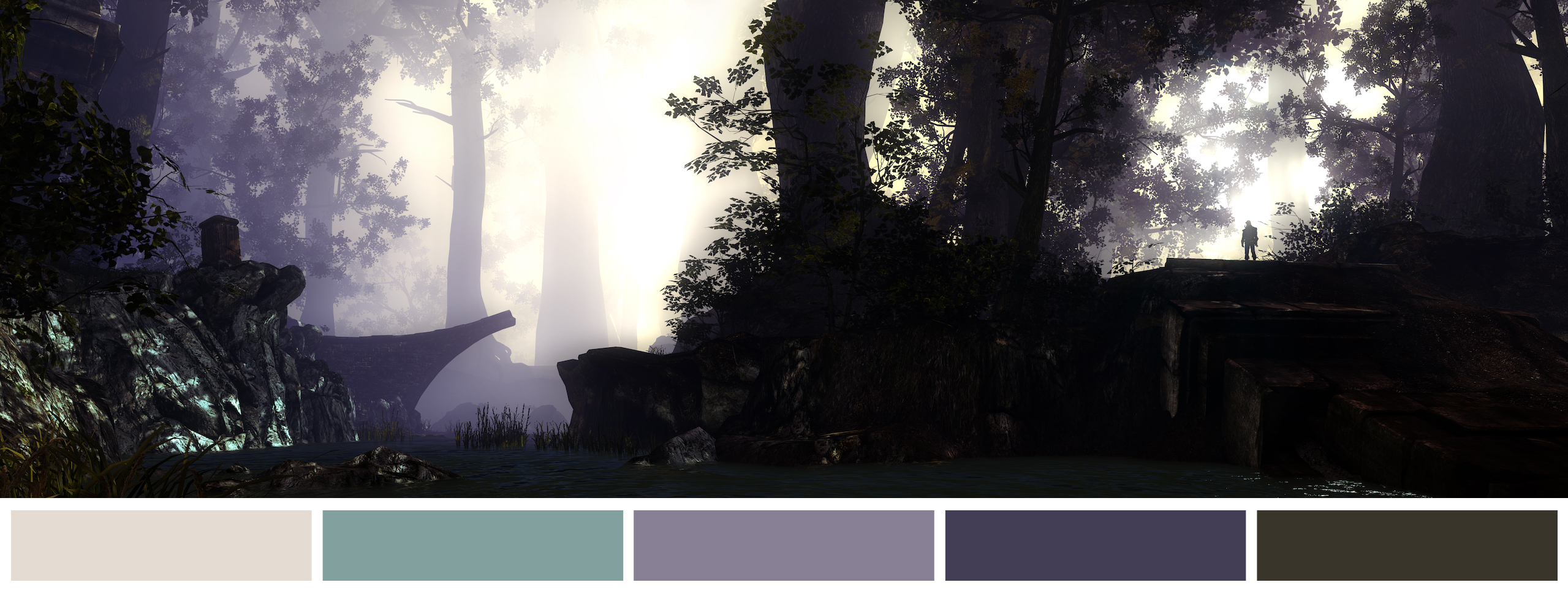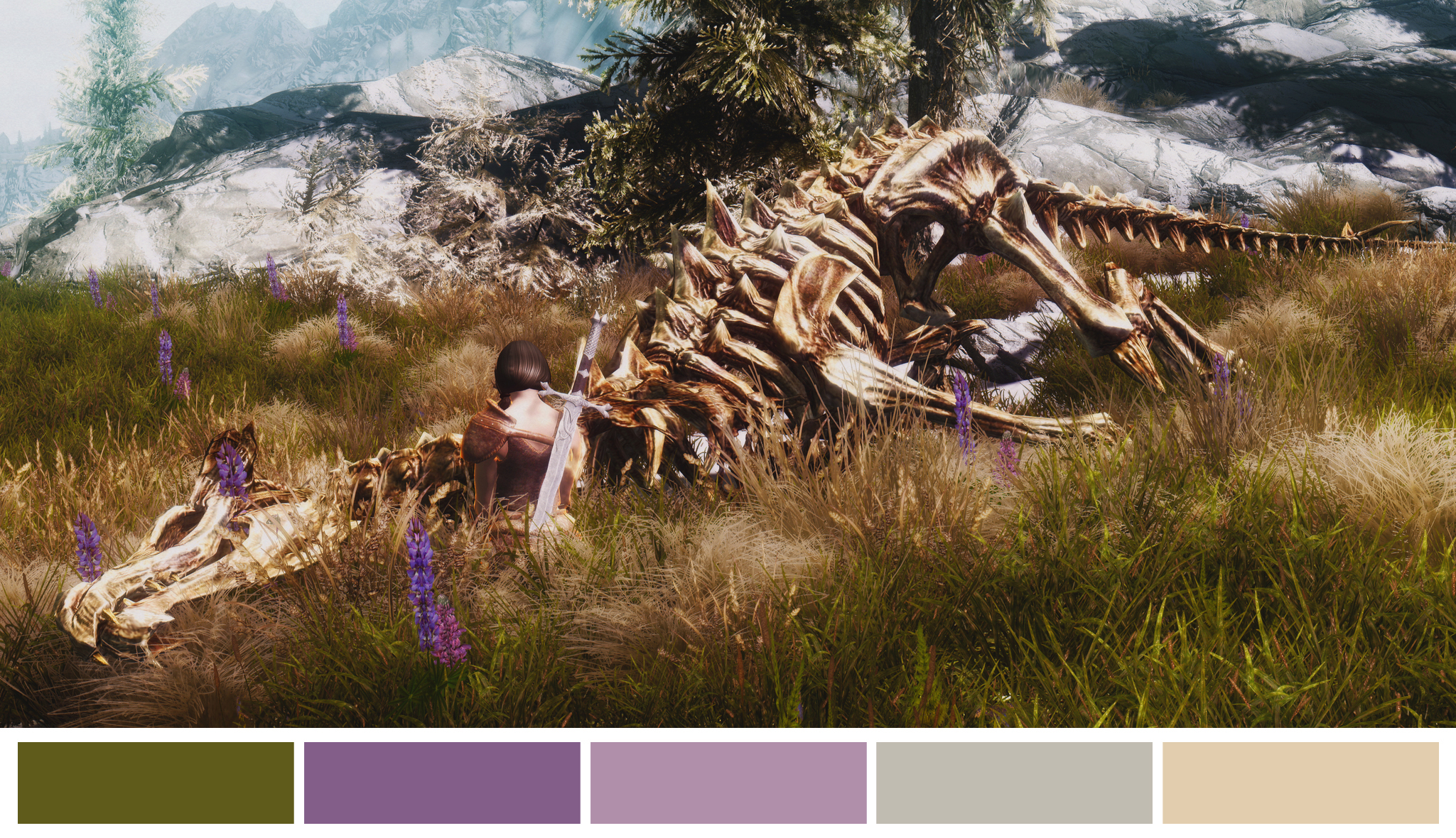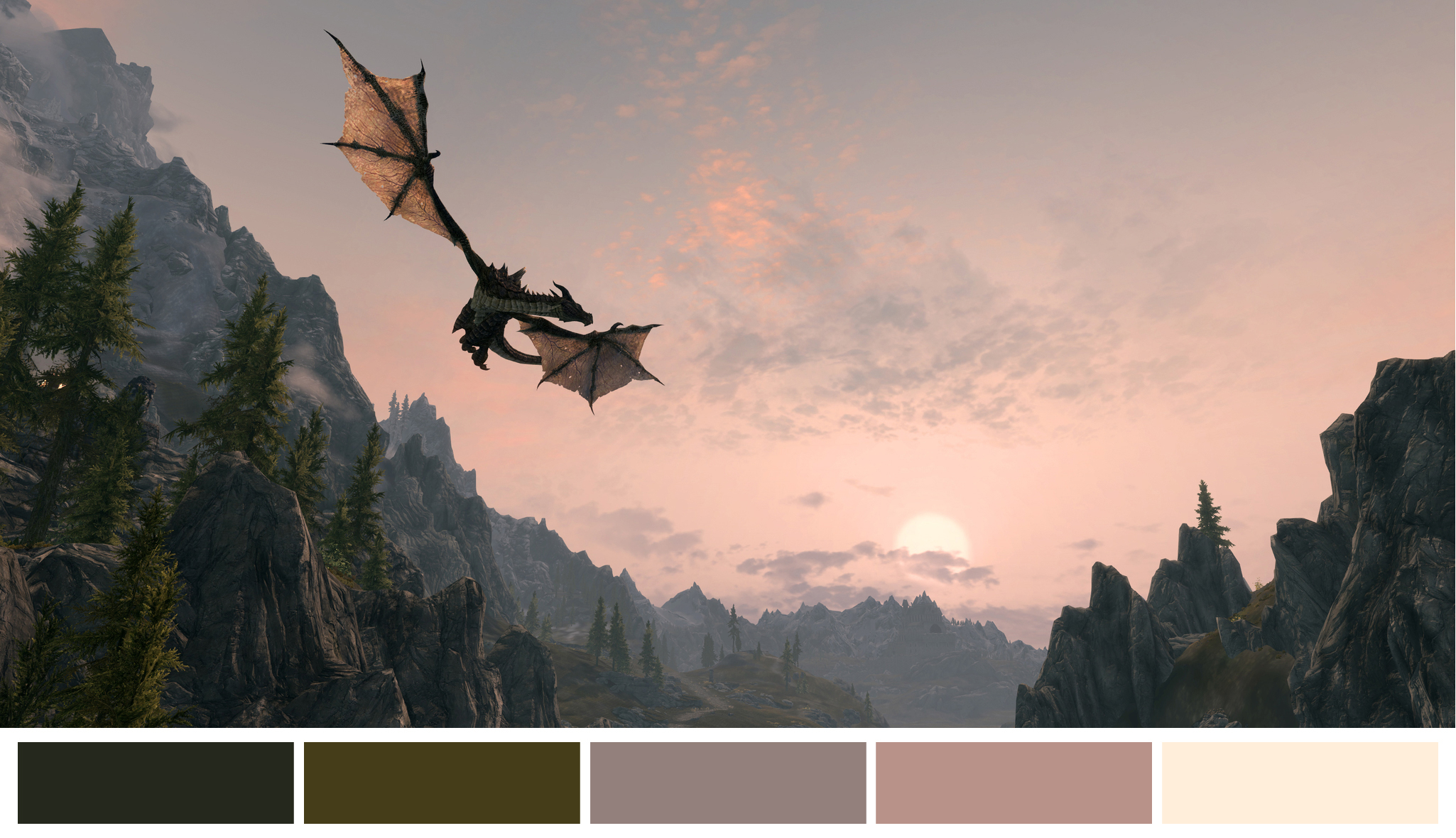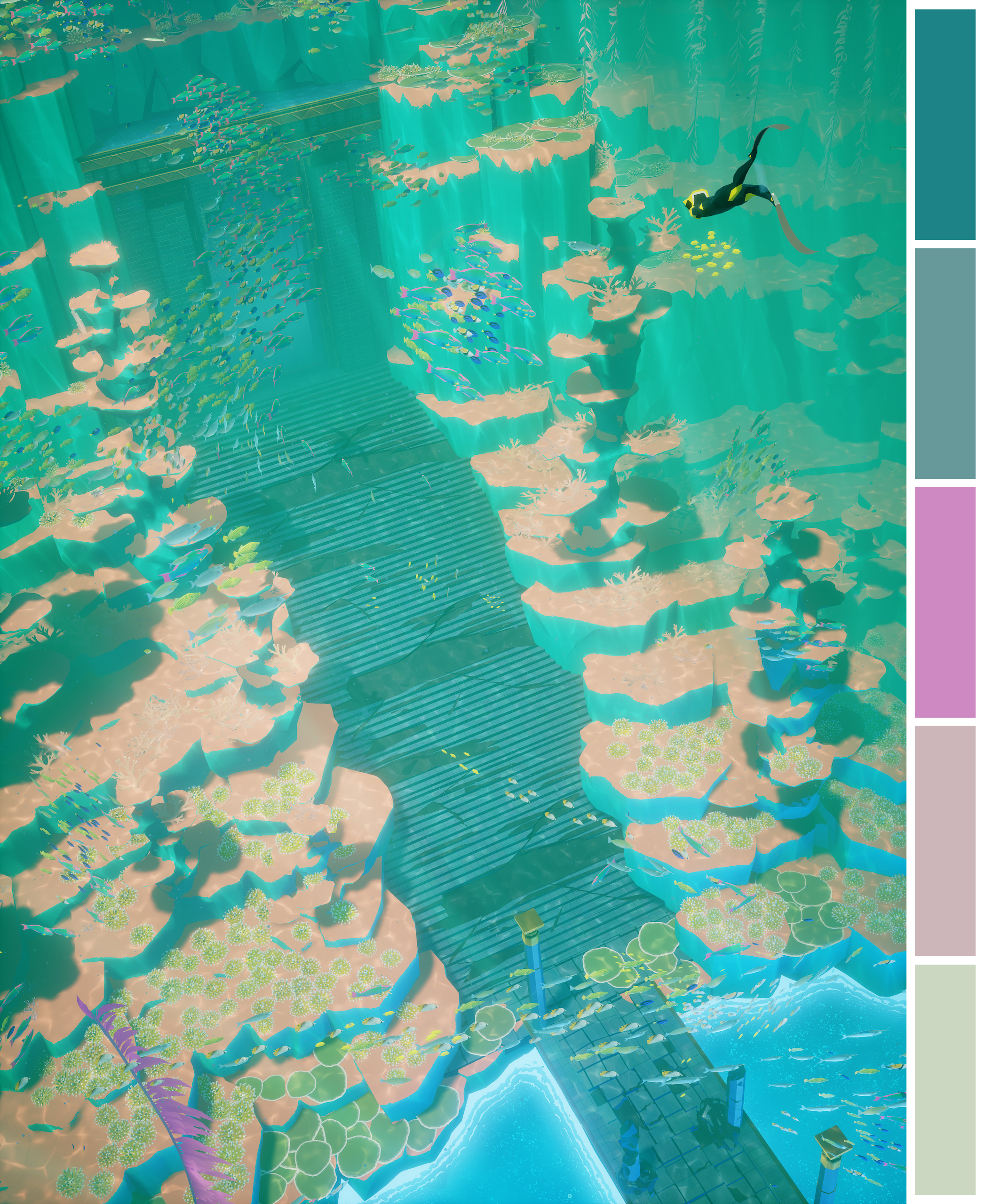Perspective Study —
Video games have grown to solidly become its own channel of art.
An experimental, independent study created to show how beautiful the art of video games can be by exploring the influence of design, specifically looking at the color palettes from a keyframe of various games, and stretching the imagination to embrace video games as its own deserving medium in the realm of ‘art’.
Please note that credit for the gorgeous screenshots goes to Dead End Thrills.
Please note that credit for the gorgeous screenshots goes to Dead End Thrills.

“Video games are meaningful – not just as sociological or economic or cultural evidence, but in their own right, as cultural expressions worthy of scholarly attention.” [– Steven E. Jones, author of “The Meaning of Video Games”]
THE MODERN PIXEL
One of the greatest aspects about video games are them being so easily accessible–a vehicle to deliver art to everyone’s TVs. Even people who wouldn’t consider themselves artists can appreciate how much work went into crafting the final product.
So, what does it take to create a video game? To begin, this process is heavily weighted on which concept artist a producer chooses to hire. They will be the very first ones to see the characters and environments come to life, and the visual developments and stylistic choices that come about from this process is the very backbone of the final game. What colors they choose to use will really convey a specific feeling depending on how they want a character to be perceived, or how they want an environment to feel. All of these seemingly basic choices add up to the final feeling of the produced game, and should not be glossed over as a quick part of the process. In the grand scheme of things, video games are built off of the combination of an artists’ and producers’ visions.
One game that pulls this process together seamlessly is The Last of Us, a game developed by Naughty Dog. Their team has been known for other great games that were very storytelling-driven, and they’ve got great style to their older game series, Jak and Daxter. The Last of Us takes it a step further than their other games in that they were able to create gorgeous visuals that perfectly convey the feeling and tone of the story at that particular time. When I played this game for the first time, I was blown away by how emotional something can get that’s simply, at the end of the day, just a bunch of pixels expertly put together. But because of the intense, adept storytelling paralleled with the amazing level design and characters living in this fleshed-out world, it was enthralling and refreshing to play. Visually, the game had gorgeous palettes. strewn within that perfectly conveys the dystopian United States that has been, for the most part, taken back by nature [among other things]. It wasn’t always as you’d expect with earthtones and darker colors; it had stunning moments where bursts of color came through–reds, yellows, oranges, lush greens to help spark a feeling of hope and encouraging you to keep soldiering on in an ultimately hopeless world that you’re thrown into.
Often, video games are used to de-stress and unwind from the day. For me, they're and endless source of inspiration for art.
Another amazing aspect of video games is that they have no limitations on their design and they have no need to mimic art in traditional formats, so they are a sandbox for bringing ideas to life in all sorts of creative ways–their potentials are unlimited. Some of these ways can be allowing the player to create their own storylines with the use of dialogue trees [such as Fallout and many other Bethesda games], some games also allow the player to walk around the world at their leisure and take in the details [such as Skyrim].




Speaking of Skyrim, there was a reason this game was such a huge success; it was because it pushed the boundaries for what the game engines could handle as well as its equally amazing storytelling, allowing for the player to create their own story within the game as well. They left it open-world enough so that the player could wander around the world of Tamriel for real-life days in the game and always have something more to discover. During my playthrough of it, Skyrim was one of the games I stayed up late on a college school night to play and played it as soon as I got home, too. What sucked me in were the gorgeous graphical elements as well as the unique storyline. Getting lost in the white snowy mountains or seeing beautiful Aurora Borealis night skies were like nothing else I’ve ever experienced in a video game before and in those details of the world, I believe that’s what great art really is at its core. Art is not, and does not always have to be tangible–it’s something that makes you really think and get lost in a world that isn’t your own.


KEEPING RELEVANT
Something that will always reign supreme in this material world is advancements in technology. With this comes infinite capabilities, especially in the video game realm. As graphics get better and better, it allows for different styles of games to be produced. This allows for the game designers to express themselves more and, like artists, develop their own looks and feels for their series. A great example of a strong stylistic game is ABZU–a game created by an indie game developer named Giant Squid Studios. It established the style during its development of Journey, another game that uses beautiful cell-shaded models that contrast against the bright backgrounds. Matt Nava, the game studio’s creative director, co-founder and president said that the company’s reason for being is, “(We) try to make games that are atmospheric and take you somewhere that’s really immersive and beautiful, but gives you something to think about at the end.” This ideology really shines through in their games. Below is a look at some of the screenshots from the game ABZU.


Since the beginning, before speech, humans have strived to visually tell stories to connect with others with emotion–later down the road, it evolved into telling stories using speech, then sketches and paintings, then books, then television shows and movies, then video games. Games are late to the party but it doesn’t mean they are any less effective in telling a good story. It shouldn’t be disregarded as a storytelling device as much as it shouldn’t be underestimated in the artistic world.
Hopefully this has given a bit of insight into the video game world that you may have not been previously acquainted with or thought about before, as it’s still a pretty fresh idea. I strongly believe games should be regarded as an art form in itself–as it manages to merge all forms of art [storytelling, visuals, music, graphic design, etc.] together to create a compelling experience that ultimately enriches your life by transporting you to different worlds you could have previously only had fleeting dreams of. I truly hope that you all can experience it one day!
︎ BACK






